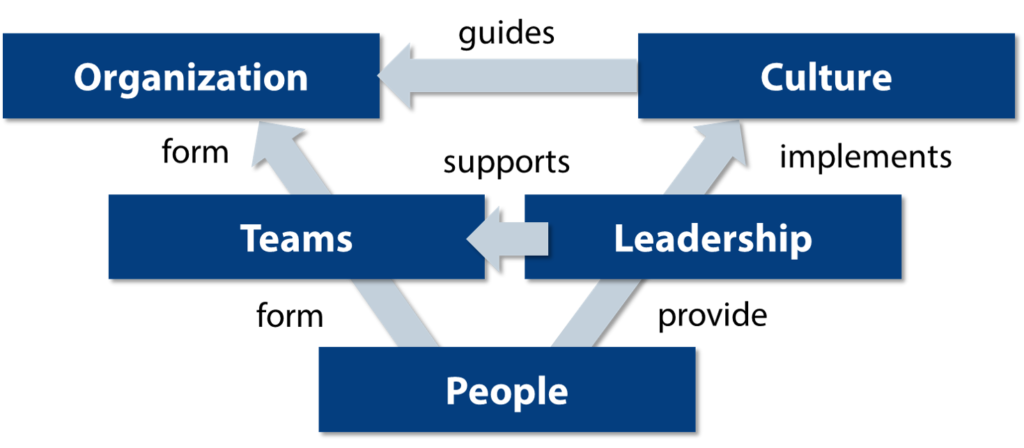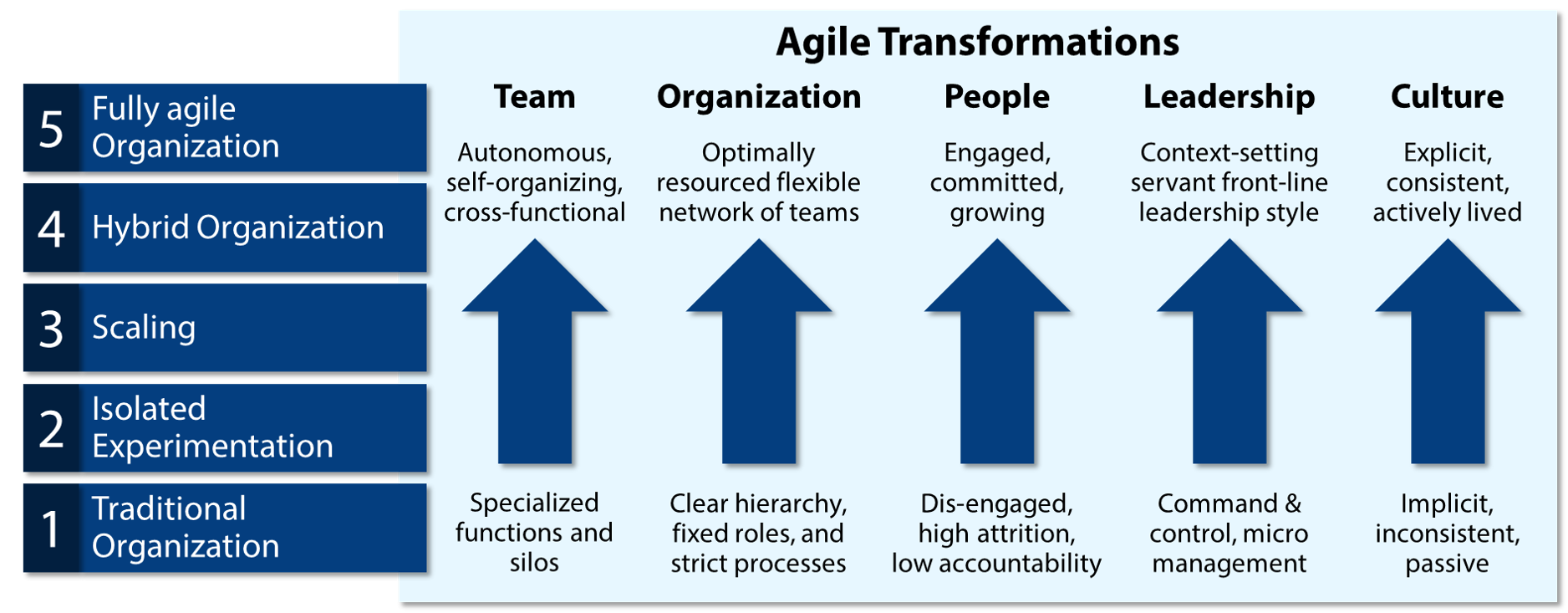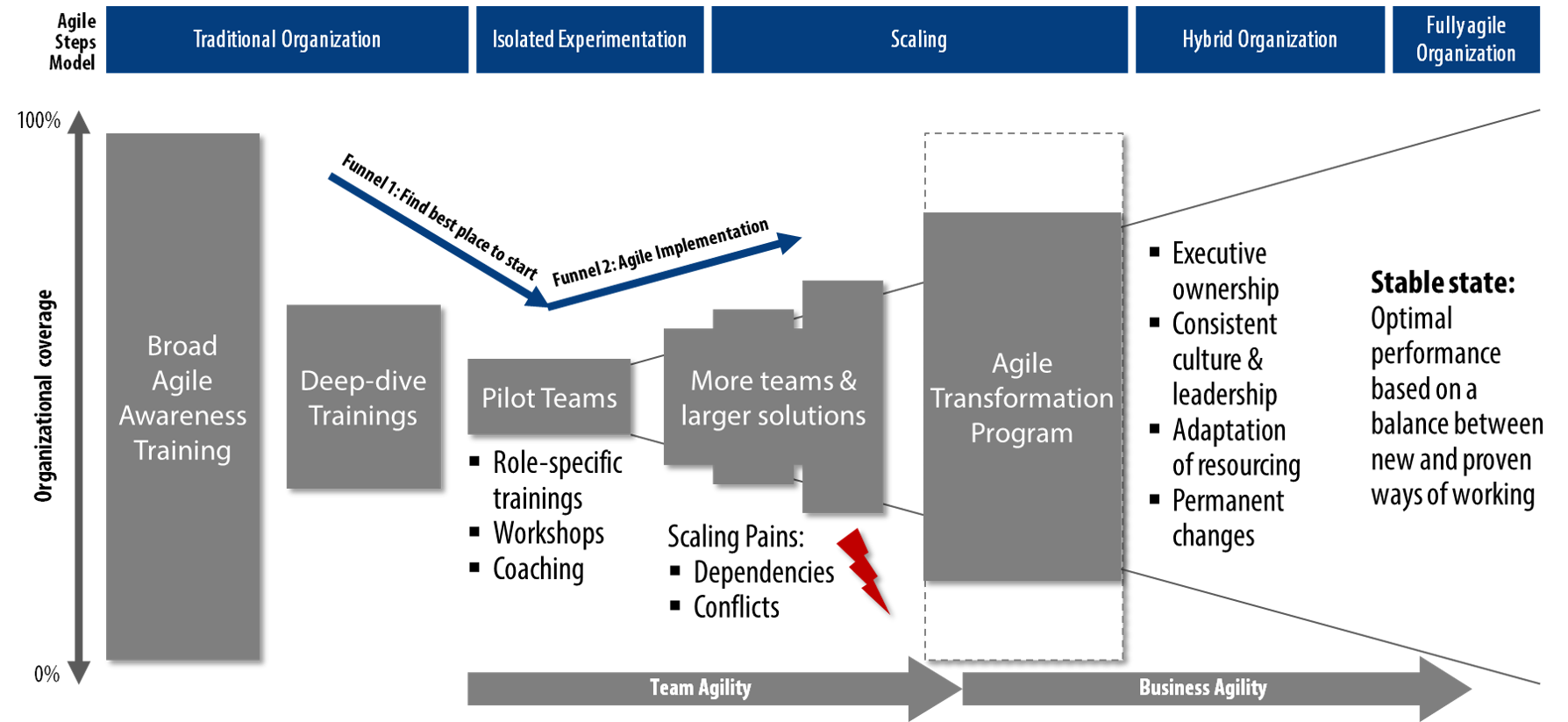During the planning of an agile transformation we will define how to transform the different parts of your business. This is the purpose of the agile transformation domains.
The agile transformation domains are based on the building blocks defined by the architecture of an agile business. The direction of the transformation is guided by the agile business manifesto.
An agile business rests on people which are the core asset of each business as articulated by the agile mindset.

People transformation
Many organizations suffer from dis-engaged staff, high attrition, and low accountability. This makes it hard to increase organizational performance, including agility.
As part of your people transformation you will transform your staff to be engaged, committed, and growing.
We will engage your people and value
- People over processes
- Potential over past performance
For more about people transformation continue here.
Team transformation
Traditional organizations are based on specialized functions and silos where everybody feels like a small, insignificant cog in a complex, unintelligible clock work waiting for the next big re-org.
As part of the team transformation you want to change this to small, autonomous, self-organizing, cross-functional teams that instill purpose.
We will create teams that value
- Proactive discovery over planning
- Iterative development over big-bang solutions
- Being change over being changed
- Continuous learning over unconditional knowing
For more about team transformation continue here.
Leadership transformation
In traditional organizations managers manage resources based on previous experiences and results. They are expected to know better and may tend to micro management and a command & control style. In an agile organization where teams self-organize such a detailed-obsessed management approach is neither needed nor wanted.
As part of the leadership transformation you will detach leadership from a role and make it a competency of everybody. Everybody in an agile organization needs to be prepared to lead if the situation demands it. We will transform the prevailing management style to a context-setting servant front-line leadership style.
We will create leaders that value
- Coaching & context over command & control
- Competencies over titles
For more about leadership transformation continue here.
Culture Transformation
In traditional organizations culture is “how we do things around here”. It is implicit, inconsistent, passive and often allowed to form without control. Until it gets out of control.
As part of the culture transformation you will change your culture to become the solid foundation of your organization by becoming explicit, consistent, and actively lived.
We will create a culture that values
- Explicit over implied values
- Lived over stated principles
For more about culture transformation continue here.
Organization Transformation
Traditional organizations are based on clear hierarchy, fixed roles, and strict processes. As a consequence they become too rigid and slow to compete successfully in today’s dynamic and VUCA market place.
As part of the organization transformation you want to change this to a optimally resourced flexible network of teams.
We will create an organization that organizes around and values
- Self-organization over fixed roles
- Cross-functional teams over silos
For more about organization transformation continue here.
Transformation Map
Guided by the agility steps model the five different transformations will be executed in parallel as needed. The approach will customized based on the agile transformation approach. It will guide the evolution of each domain from traditional to an agile ways of working.

Starting points
An agile transformation can start at any of the domains. Usually you will start with the one that has the greatest external impact.
The most common starting point are Teams taking step 2 of the agility steps model: using isolated experimentation you start by transforming individual teams, usually software development project teams, from traditional (waterfall) to agile ways of working (usually based on Scrum). This is the evolutionary, bottom-up approach to business agility.
Another common approach is to start with People starting with creating awareness about agile ways of working using broad, mostly voluntary, awareness sessions in the form of training, speeches and events to raise the interest of the corporate community in agile ways of working. From there you look for volunteers to pilot. This is the organizational, top-down approach to business agility.

